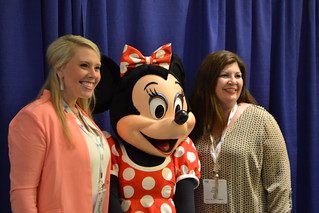ORLANDO, Fla.—Here’s how to recruit like Major League Baseball’s Billy Beane: Don’t pursue the best performer. Pursue the best performer you can afford.
Sabermetrics—popularly known as “moneyball”—rethinks how talent is measured. Beane shifted the focus to statistics and measures when selecting baseball players, and he eschewed traditional, subjective scouting methods.
The 2003 Moneyball book and 2011 movie of the same name starring Brad Pitt showed how Beane popularized the use of data science to hire the best players for the Oakland Athletics using the lowest payroll in the major league.
“Before sabermetrics, scouts were primarily going on gut feel to recruit new players,” said Tim Sackett, SHRM-SCP, president at HRU Technical Resources, a Lansing, Mich.-based staffing firm. Sackett spoke April 18 at the Society for Human Resource Management’s Talent Management Conference & Exposition.
The Oakland A’s, based in Oakland, Calif., were heavily outspent by much wealthier teams such as the New York Yankees and the Los Angeles Dodgers on free agent signings. Instead of pursuing the high-priced players, Beane applied measurement techniques to find players that other teams undervalued. Instead of competing for high-priced home-run hitters with high batting averages, Beane sought lower-cost players with high on-base percentages.
“In Beane’s world, a person with a higher on-base percentage is going to be more valuable than a stronger, faster person with a lower percentage but more home runs,” Sackett said. Having those types of players correlated better to more games won than using traditional statistics. Eventually, the lowly A’s became a playoff contender and averaged an impressive 98 wins per season for a stretch.
So, what can a talent acquisition professional learn from "moneyball"? Sackett outlined four basic takeaways.
Having One Consistent Vision
To be successful, especially when implementing and practicing a strategy that bucks the norm, you need everyone to commit to that strategy. “It’s critical that everyone on the hiring team believes in the strategic mission when interviewing and hiring people,” Sackett said. “You will have individuals working for you that are not necessarily tied in to that vision. If someone is not, they may not be a good fit for you. Let them go be a great employee somewhere else.”
Remembering the Human Element
Sackett told attendees not to hire based on gut reactions. “This becomes difficult, because it’s hard to take the human element out of hiring decisions,” he said. “We still allow a ton of bias in our decisions. Few hiring managers are aware of their biases, so they hire more people like themselves.”
But can we really show why one candidate is objectively better than another? Yes, said Sackett, a believer in people analytics, behavioral interviewing and prehire assessments. “You first have to decide which metrics define success in your environment. And that changes from department to department and from location to location.”
Defining ‘Talent’
What makes using a concept like "moneyball" in talent acquisition difficult is “that we allow hiring managers to all have different ideas about who the best hire is for their team,” Sackett said. “You need to have a single vision of who you want to work at the company, and I don’t care if they’re in operations or finance or HR.” Sackett suggested looking beyond the usual candidate pools when searching for new talent, like Beane did when he recruited from high school ranks. Untapped talent pools can be found in groups like community college students, veterans and older workers.
Defining ‘Success’
The major criticism of Beane’s approach has been that his A’s never won a World Series. “They say it wasn’t successful. But success was not about winning the World Series. It was about staying competitive,” Sackett said. There will always be a company that can pay more for talent than you can. “So you use science to make the best hires you can make at the time for what you’re able to pay,” he reiterated.
For example, Sackett related an experience working for a health care organization. “I was pushed to hire for more diversity. We were in Lansing, Mich., where the diverse population is 18 percent, and we only had 7 percent of our nurses that were diverse.”
Sackett was charged with matching the rate of diversity within the population. “I used metrics to show that the local graduation rate for diverse nurses was just 4 percent. I told the executives that I could go to Detroit, which is about an hour away, and start bussing in diverse nurses, but it will cost millions of dollars. They had to understand that success for us was not matching the diversity to our community, but succeeding with the diversity we had.”
Roy Maurer is an online editor/manager for SHRM. Follow him@SHRMRoy
Advertisement
An organization run by AI is not a futuristic concept. Such technology is already a part of many workplaces and will continue to shape the labor market and HR. Here's how employers and employees can successfully manage generative AI and other AI-powered systems.
Advertisement



